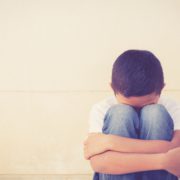Do Anti-Bullying Programs Really Work?
With a whopping three quarters of all school-age children reporting they have witnessed or been a part of bullying at school, anti-bullying policies have quickly become an imperative part of school regulation. By now, nearly every educational institution across the country has a program in place to monitor and combat this behavior, but do anti-bullying programs really work?
Bullying Behavior
According to Psychology Today (PT), “Children and adolescents become bullying targets for a wide variety of reasons though race, ethnic background, appearance, or sexual orientation appear to be the most common.” The bullying behavior can come in all sorts of actions from physical intimidation to being ignored by a former close friend. Since there are so many different forms of bullying, it’s often difficult to spot. This is where anti-bullying policies come into play.
Anti-Bullying Programs
Anti-bullying programs range in tactics from informative assemblies and visual reminders (posters and signs, for example), to more hands-on approaches that utilize hall monitors and effectively trained staff to watch for signs of bullying throughout the school grounds. Generally speaking, the most effective policies combine a multitude of approaches and begin at the earliest of ages.
What These Policies Target
In addition to informing students of what behaviors are not acceptable, teachers and staff are usually trained in-depth on the various behaviors to watch for in order to gain the most efficient and safe anti-bullying experience for students. Educators are taught to watch for things such as a change in demeanor, isolation of a student, changes in performance, and many other behaviors which could indicate bullying.
Do Anti-Bullying Programs Really Work?
With so much training and effort going into anti-bullying programs today, many have asked the question: do they really work? As Psychology Today explains, the effectiveness of anti-bullying programs is usually reliant upon the vigilance of those implementing it. In other words, it’s not as simple as saying they work or they do not work, it’s more to do with the attention and determination of the staff and families of students.
“Ultimately, what really determines whether anti-bullying programs are effective is how well the anti-bullying guideline are followed in schools,” PT states. Since the level of participation and attentiveness varies from every location, it’s easy to understand why diligence is key to a successful anti-bullying program.
How to Improve Anti-Bullying Programs
In order to ensure anti-bullying programs have the highest possible rate of success, there are a few important factors to keep in mind. For starters, thwarting bully behavior is something that takes the utmost of attention and detail – it’s more about the action and less about the passivity.
Acting on bullying behavior means that educators and parents must both participate in a clear-cut set of consequences for anyone caught bullying. These consequences may need to be adjusted throughout the year in response to the effectiveness, so ultimately, the plan must be severe enough to make an impact but flexible enough to stay relevant.
The most important thing an anti-bullying policy must include is priority. The safety of students needs to be the number one priority, even above teaching duties, in order to have the largest impact on bullying behaviors. Students must know they are being taken seriously and that they are safe in their surroundings, as well as understanding bullying behavior is absolutely not tolerated.



















